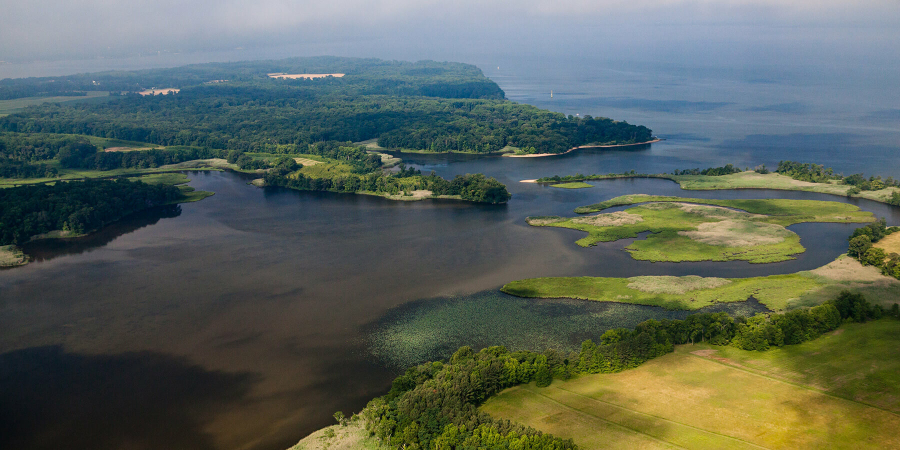Chesapeake Bay Watershed Agreement
Signed in 2014, this landmark accord establishes goals and outcomes for the restoration of the Bay, its tributaries and the lands that surround them.

Since the Chesapeake Bay Program’s foundation in 1983, its partners have used written agreements to guide the restoration of the nation’s largest estuary and its watershed. Setting goals and tracking progress holds partners accountable for their work, while developing new agreements over time ensures our goals are aligned with the best available science to attain restoration success.
Abundant Life
Poor water quality and harvest pressure challenge the health of species across the region, while our increasing need for land and resources has fragmented and degraded the habitats they depend on. Supporting sustainable fish and shellfish populations and restoring habitat for native and migratory species will support a strong economy and a balanced ecosystem.
- Sustainable Fisheries: Protect, restore and enhance finfish, shellfish and other living resources, their habitats and ecological relationships to sustain all fisheries and provide for a balanced ecosystem in the watershed and Bay.
- Vital Habitats: Restore, enhance and protect a network of land and water habitats to support fish and wildlife and to afford other public benefits, including water quality, recreational uses and scenic value across the watershed.
Clean Water
Excess nutrients, sediment and toxic contaminants degrade our waterways, harm fish and wildlife and pose risks to human health. Reducing these pollutants is critical to creating safe, healthy waters for animals and people alike.
- Water Quality: Reduce pollutants to achieve the water quality necessary to support the aquatic living resources of the Bay and its tributaries and protect human health.
- Toxic Contaminants: Ensure that the Bay and its rivers are free of effects of toxic contaminants on living resources and human health.
- Healthy Watersheds: Sustain state-identified healthy waters and watersheds, recognized for their high quality and/or high ecological value.
Conserved Lands
Changes in land use and development can impair water quality, degrade habitats and alter culturally significant landscapes. Conserving lands with ecological, historical and community value is integral to maintaining a healthy ecosystem and vibrant culture.
- Land Conservation: Conserve treasured landscapes in order to maintain water quality and habitat; sustain working forests, farms and maritime communities; and conserve lands of cultural, indigenous and community value.
Engaged Communities
The long-term success of the Chesapeake Bay restoration effort depends on the work of individuals and communities living throughout the watershed. Connecting with current environmental stewards and encouraging future local leaders helps build the network that will keep our work moving forward.
- Stewardship: Increase the number and diversity of local stewards and local governments that actively support and carry out the conservation and restoration activities that achieve healthy local streams, rivers and a vibrant Chesapeake Bay.
- Public Access: Expand public access to the Bay and its tributaries through existing and new local, state and federal parks, refuges, reserves, trails and partner sites.
- Environmental Literacy: Enable students in the region to graduate with the knowledge and skills to act responsibly to protect and restore their local watershed.
Climate Change
Storms, floods and sea level rise will have big impacts across the watershed. Monitoring, assessing and adapting to these changing environmental conditions will help our living resources, habitats, public infrastructure and communities withstand the adverse effects of climate change.
- Climate Resiliency: Increase the resiliency of the Chesapeake Bay watershed, including its living resources, habitats, public infrastructure and communities, to withstand adverse impacts from changing environmental and climate conditions.
